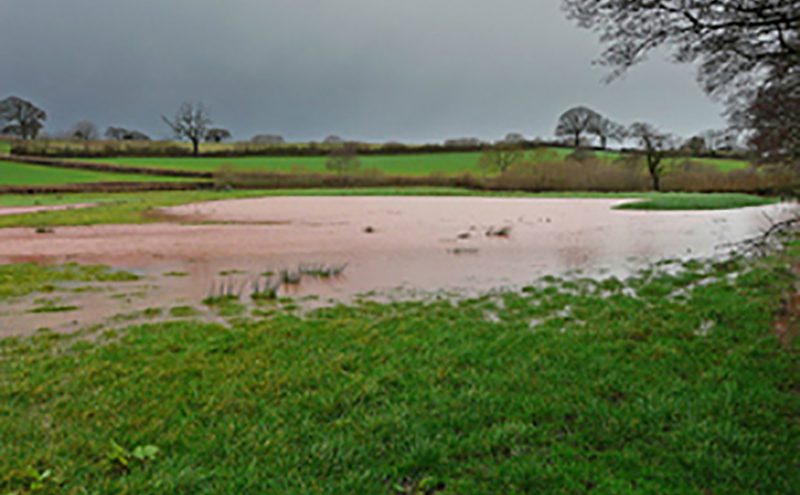
On 31 October the Environment Agency published data, case studies and evidence about the role of natural flood management in reducing flood risk. Working with natural processes to reduce flood risk is not a new concept but this is the first time that all the evidence has been brought together, with the intention of enabling more uptake, says the agency.
“The evidence behind natural flood management” contains more than 60 case studies from across England and explores how successful the approach is, how it could be used elsewhere and what research may still be needed.
Natural flood management is when natural processes are used to reduce the risk of flooding and coastal erosion. Examples include: restoring bends in rivers, changing the way land is managed so soil can absorb more water and creating saltmarshes on the coast to absorb wave energy.
At Hesketh, on the Lancashire coast, a ‘managed realignment’ scheme has created more than 300 hectares of saltmarsh which protects 143 residential properties, 3 commercial buildings and 300 hectares of farm land. Coastal schemes such as this not only dissipate wave and tidal energy but can also reduce impact on defences, reduce tidal surges and lead to slightly lower water levels at defences.
The study includes a project in Debenham, Suffolk, where modelling has shown that installing a range of natural flood management features along the River Deben could provide more than 30,000 m3 of water storage – thereby reducing annual average damages to properties and farmland by 31%.
On Lustrum Beck, in Stockton-on-Tees, modelling showed that providing 100,000 m3 of storage in the upstream catchment, using wetlands, features to reduce run-off and river restoration, could reduce flows by more than 10%.
John Curtin, Executive Director of Flood & Coastal Risk Management at the Environment Agency, said:
I often think improving flood resilience is like a mosaic, many different pieces need to come together to complete the resilience picture. Natural flood management is an important part of that mosaic when used alongside more traditional engineering. These projects also provide fantastic opportunities for community involvement and leadership.
Many of our flood schemes already feature a mixture of hard and soft engineering and natural flood management. It can be a cost-effective and sustainable way to manage flood risk alongside traditional engineering, while creating habitat for wildlife and helping regenerate rural and urban areas through tourism.
Natural flood management works best when a ‘catchment based approach’ is taken, where a plan is developed to manage the flow of water along the whole length of a river catchment from its source to sea. This way, natural processes can be used upstream and on the coast to compliment engineered flood defences – such as walls and weirs – in populated areas.
Natural flood management not only reduces flood risk it can also achieve multiple benefits for people and wildlife, helping restore habitats, improve water quality and helping make catchments more resilient to the impacts of climate change.
The Environment Agency hopes that the evidence directory will help flood risk managers, local authority engineers, non-governmental organisations and community flood action groups to incorporate natural approaches to flood risk management in to their plans to reduce flood risk.
Earlier this year the government announced a further £15m for natural flood management schemes across England.
‘The evidence behind natural flood management’ was launched at the CIWEM (Chartered Institution of Water and Environmental Management) Conference in London.
The papers can be found here.







